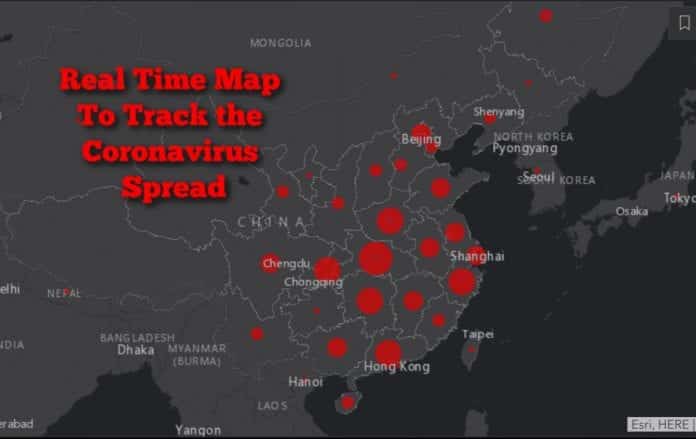Coronavirus Infection Real-Time Map To Track The Spread Of Virus
The public health experts and authorities of China are trying to understand and eventually prevent the spread of deadly Coronavirus that originated in the city of Wuhan, China during the last weeks of 2019, as the death toll has increased to 80 with around 2700 people infected including 5 confirmed cases in the US.
Researchers from the Center for Systems Science and Engineering at John Hopkins University, US has put up a real-time map to track the global spread of Coronavirus infection that updates the number of Coronavirus confirmed cases across the world. You can access the Live-Map here.
The map has been developed using the data collected from the Centers for Disease Control and Prevention (CDC), WHO (World Health Organization), and the China National Health Commission and Dingxiangyuan – a website that reportedly aggregates data from Chinese government sources in “near real-time.”
Travelers could use this map as a good reference to decide if they should go ahead with the travel plan or not.
Scientists believe that the 2019-nCoV Coronavirus enters the human body through mouth or nose. Once it enters the human body, it infects a host cell
in the respiratory system. The cell disintegrates after an incubation period, thereby releasing the virus to the nearby cells, the cycle continues as the virus multiplies inside the body.The Coronavirus has become a global problem with the virus infection confirmed in 15 countries across the world. Scientists believe that the virus spread through travelers from Wuhan, not intentionally, of course, as the symptoms usually do not show up for several days after the infection. According to CSSE, the first case of Coronavirus infection outside China was reported in Thailand on Jan 13, while the first cases in China, but outside Wuhan were reported in Beijing and Guangdong on Jan 19.
On January 20, China’s National Health Commission (NHC) confirmed that the virus can be transmitted between humans through coughing or sneezing. The Coronavirus has been confirmed in other countries also like Hong Kong (8 cases), Thailand (8), Macau (6), US (5), Australia (4), Japan (4), Malasia (4), Singapore (4), Taiwan (4), France (3), South Korea (3), Vietnam (2), Canada (1) and Nepal (1). All infected had traveled to Wuhan recently.
According to the World Health Organization (WHO), it is still early to declare the disease as a global health emergency. 34 people have recovered from the infection while 177 are in a serious condition, says Chinese authorities. The 2019-nCoV symptoms include cough, sore throat, high temperature, and runny nose. The Coronavirus infection can also lead to pneumonia, a condition where the lungs get filled with fluid and can lead to death due to ‘drowning’.
Previously it was believed that the infection spread from animals to humans. But as the growing number of patients in Wuhan reportedly did not have any possible exposure to animal markets, it raised the possibility of human to human transmission. CDC is still unclear about how sustainably and easily this infection is spreading. Coronaviruses are common in many animals, but their evolution has lead to the origin of forms that can infect humans also. The two Coronavirus outbreaks, MERS outbreak in 2012 and SARS outbreak in 2002 were similar cases.
The National Institutes of Health (NIH) in the US are already working towards the vaccine for Coronavirus, but it could take at least one year before it becomes available. So it cannot help the 2019-nCoV infected patients. SARS in 2002 had killed more than 800 people and infected more than 8000.
The real time map of coronavirus infections across the world would finally help the tourists to avoid the places with confirmed cases.































